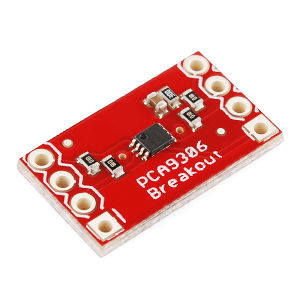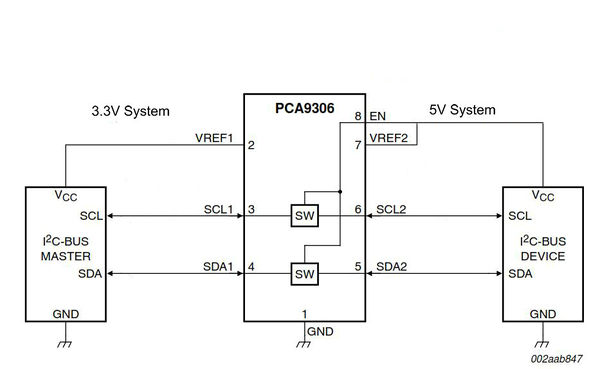Difference between revisions of "PCA9306 Level Translator Breakout"
From Geeetech Wiki
(→Usage) |
(→How to buy) |
||
| Line 28: | Line 28: | ||
==How to buy== | ==How to buy== | ||
| − | Click here to buy [PCA9306 Level Translator Breakout] | + | Click here to buy [http://www.geeetech.com/pca9306-level-translator-breakout-p-654.html PCA9306 Level Translator Breakout] |
Latest revision as of 06:01, 28 October 2014
Contents
Overview
This is a breakout board for the PCA9306 dual bidirectional voltage-level translator. Because different parts sometimes use different voltage levels to communicate, voltage level translators can be the key to making different parts play nice.
The PCA9306 is a dual bidirectional I2C-bus and SMBus voltage-level translator that's operational on the low side from 1.0 V to 3.6 V and on the high side from 1.8 V to 5.5 V. Simply apply your low- and high-side reference voltages to the VREF1 and VREF2 respectively, connect your I/O and drive the Enable pin high to open bidirectional voltage translation without the use of a direction pin!
Features
- 2-bit bidirectional translator for SDA and SCL lines in mixed-mode I2C-bus applications
- Standard-mode, Fast-mode, and Fast-mode Plus I2C-bus and SMBus compatible
- Less than 1.5 ns maximum propagation delay to accommodate Standard-mode and Fast-mode I2C-bus devices and multiple masters
- Allows voltage level translation between:
- 1.0 V Vref(1) and 1.8 V, 2.5 V, 3.3 V or 5 V Vbias
- 1.2 V Vref(1)and 1.8 V, 2.5 V, 3.3 V or 5 V Vbias
- 1.8 V Vref(1)and 3.3 V or 5 V Vbias
- 2.5 V Vref(1) and 5 V Vbias
- 3.3 V Vref(1) and 5 V Vbias
- 1.0 V Vref(1) and 1.8 V, 2.5 V, 3.3 V or 5 V Vbias
- Provides bidirectional voltage translation with no direction pin
- Low 3.5 Ω ON-state connection between input and output ports provides less signal distortion
Usage
Document
How to buy
Click here to buy PCA9306 Level Translator Breakout

